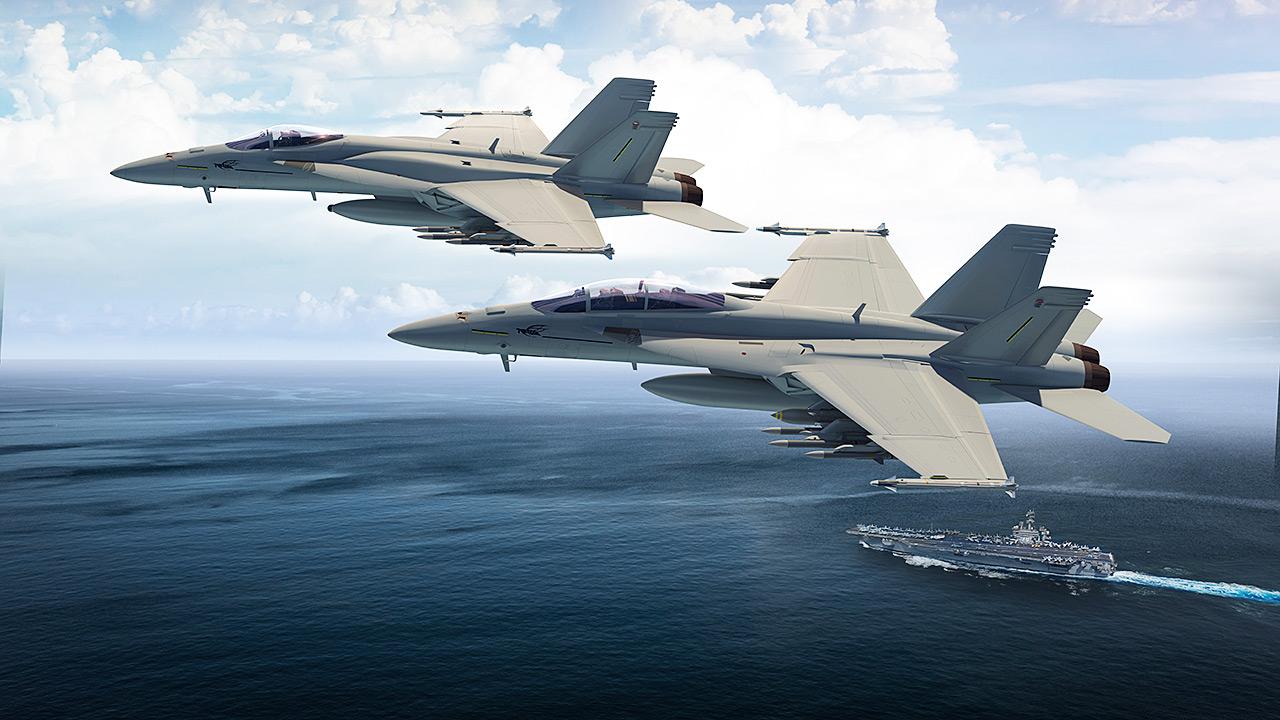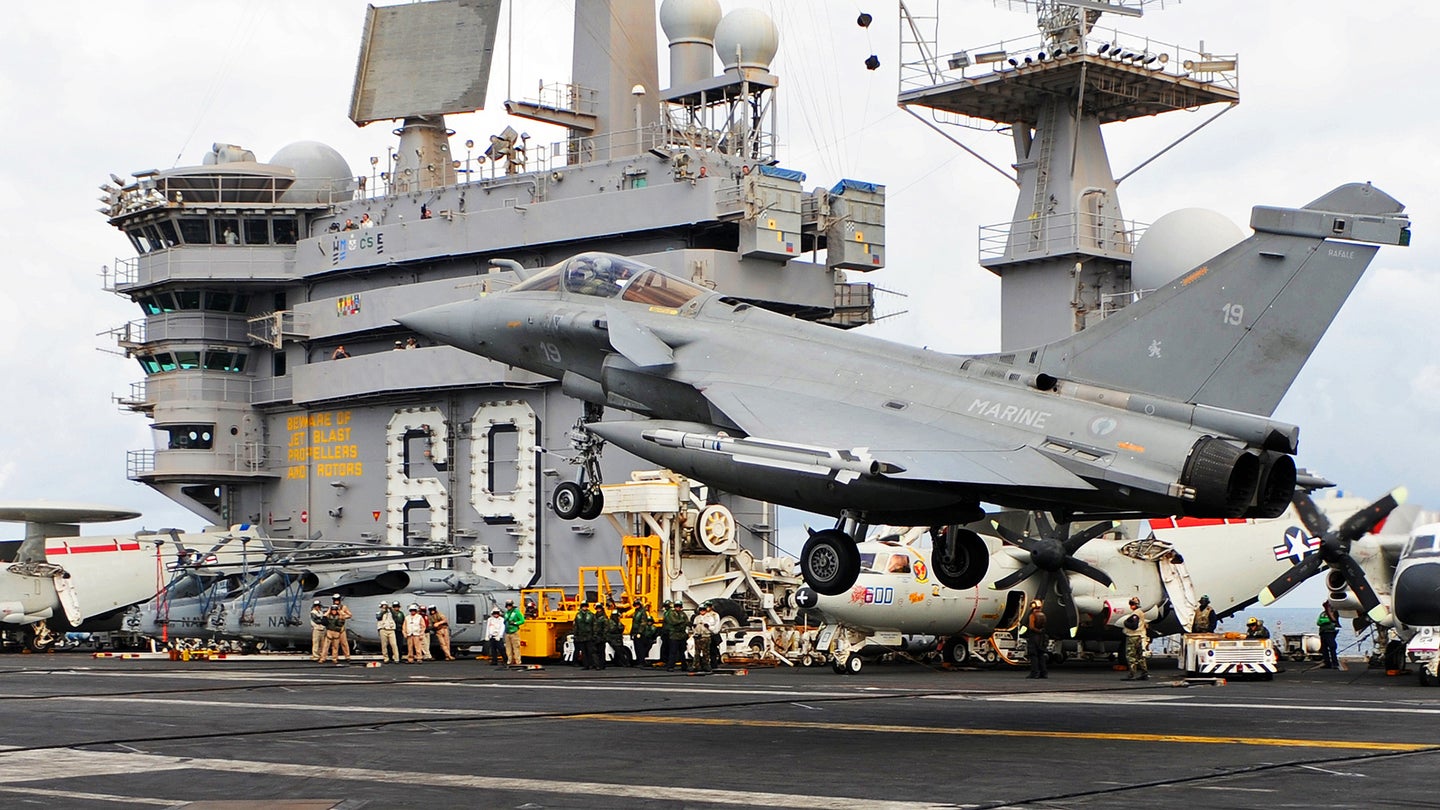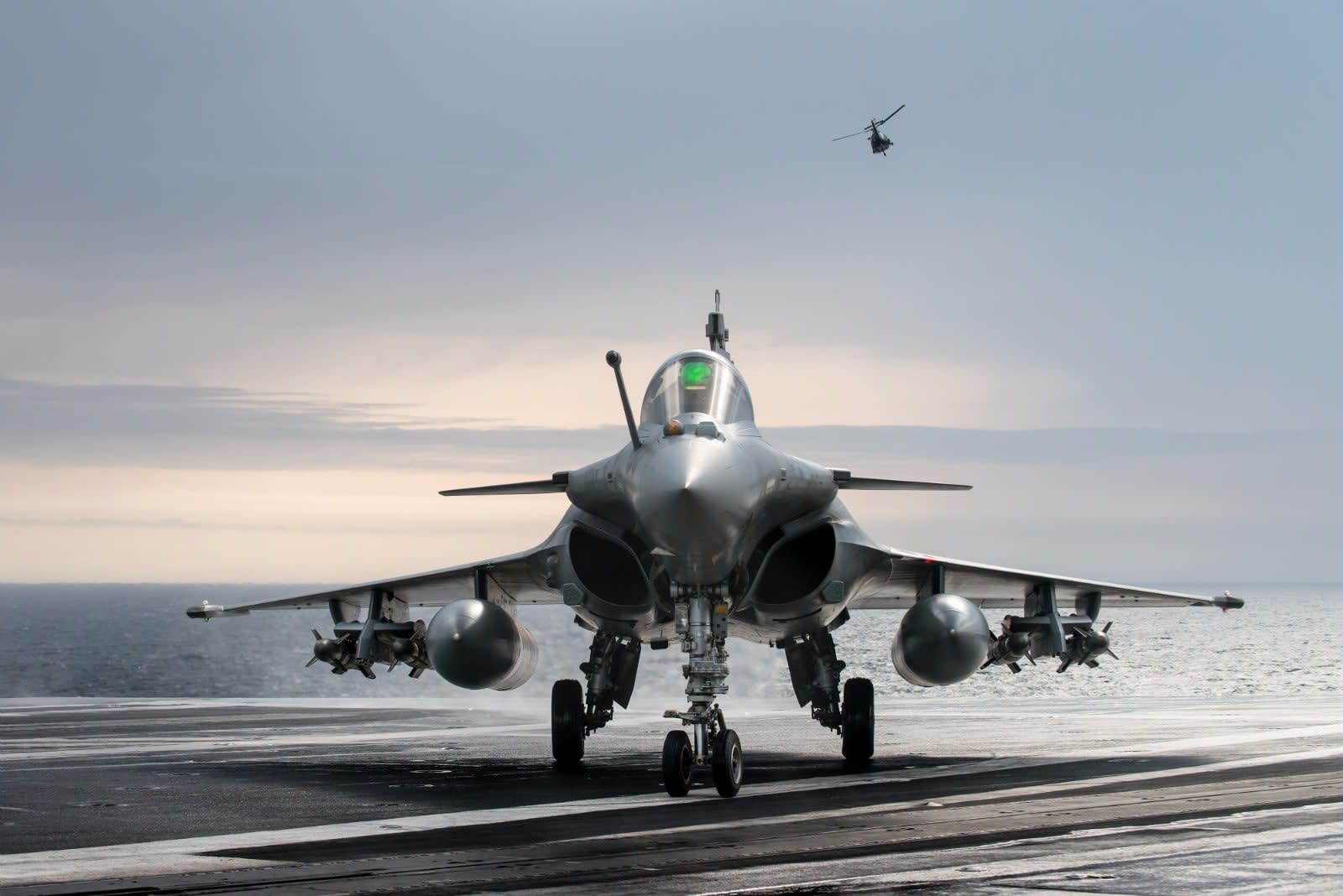Touted as the favorite of the Indian Air Force, New Delhi is mulling to acquire additional 57 Rafale fighters for its Navy, after signing a deal to buy 36 Dassault jets in fly-away condition from France.
Destroying Its Own Nuclear Arsenal — Meet The Only Country In The World That ‘Built & Buried’ Its Nukes
India is on the hunt for multi-role carrier-based fighters for its new indigenously developed Aircraft carrier that is currently on sea trials. The Indian Navy has indicated that it remains determined to acquire a twin-engine aircraft to replace the MiG-29K which currently operates from INS Vikramaditya.
The Indian Navy will conduct flight testing of the naval version of Rafale fighters at the Shore Based Test Facility at INS Hansa in Goa from January 6 onwards as part of its exercise to determine the finest warplane to suit the 40,000-tonne carrier INS Vikrant which is planned to be commissioned in August 2022.
For now, Rafales appear to be ‘hot contenders’ after then Indian Navy chief Admiral Karambir Singh had said the Indian Navy may pursue a joint acquisition of fighters with the Indian Air Force.
The IAC 1 is now undergoing extensive sea trials in the Arabian Sea and the Indian Ocean at the Cochin shipyard.
A request for information (RFI) for a multirole carrier-borne fighter was issued by the Directorate of Naval Air Staff in January 2017 as the currently operational Mig-29K is scheduled to be phased out in 2034.
The Indian Navy has opted to assess a global tender for carrier-based twin-engine fighters, despite the fact that the indigenously developed twin-engine deck-based fighter (TEDBF) is slated to arrive by 2032.
China’s ‘Treacherous’ Border Laws Comes Into Effect; Beijing Can Even Use Nuclear Weapons To Seize ‘Disputed Land’
In March, the Indian Navy also plans to test the US F-18 Super Hornets as an alternative for the Rafale-M (Marine) aircraft at the same location. The Boeing F-18 Super Hornet is a tried-and-true carrier-based multi-role fighter for the US Navy, with striking missions dating back to the 1991 Gulf War.

The IAC-1 is supposed to be commissioned as INS Vikrant on August 15, 2022, the 75th anniversary of Indian independence. The Indian Navy could ask the French manufacturers of the aircraft to lease four to five Rafale-M aircraft in 2022 so that the aircraft carrier can be made operational.
Ambala airbase in India already has a Rafale maintenance and flight training facility. The naval aviators will be trained at INS Hansa, according to Hindustan Times.
In her recent visit to India, the French Defense Minister had also expressed her willingness to supply the carrier-based Rafale to India.
She had stated – “We know the aircraft carrier will be arriving soon…and that planes will be required. If India decides to buy another Rafale, we are ready to offer it. At the time, she had also declared that France would supply additional Rafale fighters over and above the 36 being acquired by the Indian Air Force, if India needs it.
Delhi | We're ready to answer any addl needs or requests that could be made by India. We know that an aircraft carrier will soon be delivered. Aircraft are needed. So we're open& ready to provide any other Rafale if this is India’s decision: French Defence Minister Florence Parly pic.twitter.com/D2UMKRNzAY
— ANI (@ANI) December 17, 2021
Even before signing the contract for the air force fighters in 2016, Dassault Aviation was in talks with the Navy about selling the naval variant of the Rafale.
Rafale-M Vs Super Hornets
The Indian Navy was pitched Boeing’s twin-seater F/A-18 Block III Super Hornet in response to its RFI for 57 multi-role carrier-based fighters. According to Boeing, the Super Hornet Block III is the most sophisticated variant of the Super Hornet and outperforms fourth-generation fighter capabilities.

This aircraft can operate from a “ski-jump” ramp and has been dubbed the “enabler for safe Indo-Pacific” by Indian analysts, who have expressed confidence in the Super Hornets’ capabilities and appropriateness for the Indian Navy, as previously reported by the EurAsian Times.
“The F/A-18 Super Hornet Block III on offer to the Indian Navy (IN) is the most advanced, multi-role, frontline fighter of the US Navy (USN) and is the workhorse for the fleet, and will remain so for the foreseeable future,” Ankur Kanaglekar, Head India Fighters Sales, Boeing Defense, Space and Security, told the Financial Express earlier.
Boeing releases a video of the F/A-18 Super Hornet successfully performing a ski-jump launch. Says it demonstrates the Block III Super Hornet’s compatibility with Indian Navy carriers. pic.twitter.com/KHmrxy6o59
— Manu Pubby (@manupubby) December 21, 2020
The latest Block III variant has significant upgrades that include improved network capability, longer range, lower radar signature, a more modern cockpit, and a better communication system.
This fighter comes with shoulder-mounted fuel tanks that can accommodate up to 3500 pounds (1587 kg) of additional fuel. This will help to reduce drag and allow the aircraft to fly for longer periods of time and carry greater weight.
The Super Hornets have already proved their capability with the US Air Force and remain operational in several countries to date. The US Navy received its latest block III variant in September last year. This fighter is now directly competing against Dassault Rafale as the Indian Navy evaluates and tests which fighter will best suit its IAC-1.
Boosting Indian Navy’s Firepower, DRDO Launches Nuclear Submarine With ‘Vertical Launch System’
Military experts believe the Rafale Marine fighters have an advantage over the Super Hornets since a mega-deal worth $8.7 billion was negotiated between France and the Indian government for 36 Rafale warplanes for the Indian Air Force (IAF), according to another previous report of the EurAsian Times.
The weight-to-power ratio of the Rafale, as well as its maritime strike capabilities and France’s proven reliability as a strategic partner, all work in its favor. The Rafale platform has piqued the interest of both the Indian Air Force and the Indian Navy.
The METEOR missile, a robust radar, and an upgraded Spectra electronic warfare system are all included in the Rafale M (Marine) version being pitched to the Indian Navy. It also includes the GBU16 500kg laser-guided bomb in terms of weapons. It has a better warning capability and is more resistant to GPS jamming.
Charles de Gaulle aircraft carrier with the Marine Nationale. On Exercise Polaris. Catapulting Rafale fighter jets into the sky. How impressive is this? pic.twitter.com/76pajVGGZm
— Kim Willsher (@kimwillsher1) December 2, 2021
With the incorporation of the new laser designation pod, the naval variant of the Rafale has improved ground target recognition and designation capability (TALIOS). It also includes a built-in next-generation refueling pod (NARANG). Air-to-air refueling is also possible with the aircraft.
Speaking to EurAsian Times, Vice Admiral Shekhar Sinha (Retd.) who is also on the editorial board of The EurAsian Times, gave a very nuanced explanation. He said, “First, the trials from shore-based test facilities will establish whether the aircraft can take-off from a ski jump.

There are a number of mathematical calculations and simulations required. Once it is conclusively established, the arrester wire trials would perhaps be undertaken to establish whether the aircraft can stop within the available deck after wire pull out.
This should lead to ship trials. It is a long-drawn process. Similar trials would have to be done with competing aircraft. Should both meet basic necessities of launch and recovery, the QRs of performance will have to be demonstrated. Based on these preliminaries any decision can be taken.”
So while both fighter jets are engaged in stiff competition, there could be no preliminary parameter to gauge if one has a clear edge over another. The Indian Navy could be expected to give a clear picture once both jets are tested.
- Contact the author at sakshi.tiwari9555@gmail.com
- Follow EurAsian Times on Google News




